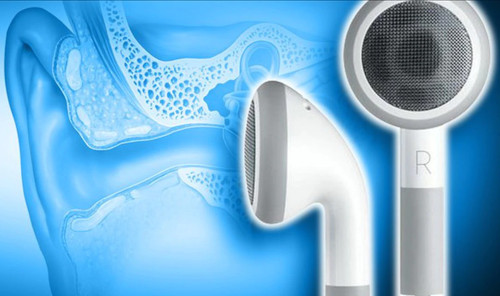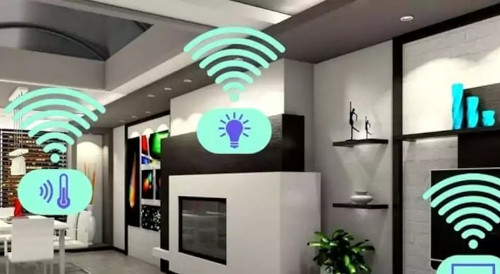How Wireless Headphones Could Lead to Neurological Disorders
Story at a glance:
• Wireless headphones, like Apple’s popular AirPods, could be dangerous to human health, according to a petition signed by 250 scientists.
• The petition to the United Nations (U.N.), led by the International Electromagnetic Field Alliance takes aim at nonionizing electromagnetic fields (EMFs), which are used by AirPods and other Bluetooth devices, as well as cellphones and Wi-Fi, which emit radiofrequency radiation (RFR).
• The devices, which include not only AirPods but also other wireless Bluetooth headphones, communicate with one another by sending a magnetic field through your brain.
• One scientist who signed the petition believes the use of earbuds is akin to a giant experiment and could increase your risk of neurological disorders.

Wireless headphones, like Apple’s popular AirPods, could be dangerous to human health, according to a petition signed by 250 scientists.
The devices, which include not only AirPods but also other wireless Bluetooth headphones, bring a new level of function and convenience to those looking to listen to music, podcasts, audiobooks and more while on the go.
Since their introduction, more than 44 million AirPods have been sold, with another 55 million predicted to be sold in 2019 alone. Forecasts were that 80 million would be sold in 2020, but when the final tally came in, they actually hit over 100 million.
It’s an undeniably alluring bit of technology — one that was further made into a “necessity” of sorts when Apple removed the headphone jack from its iPhone 7 — but it’s one that may come at a steep price.
The petition to the United Nations (U.N.), led by the International Electromagnetic Field Alliance, takes aim at both nonionizing electromagnetic fields (EMFs), which are used by AirPods and other Bluetooth devices, as well as cellphones and Wi-Fi, which emit radiofrequency radiation.
Scientists warn of danger from EMFs
The petition, which was originally released in 2015 and updated in 2019, is an international appeal from scientists who work closely in the study of the health effects of nonionizing EMF.
For decades, the industry has claimed that nonionizing radiation is harmless and the only radiation worth worrying about is ionizing radiation.
On the contrary, the scientists state:
“Based upon peer-reviewed, published research, we have serious concerns regarding the ubiquitous and increasing exposure to EMF generated by electric and wireless devices.
These include — but are not limited to — radiofrequency radiation (RFR) emitting devices, such as cellular and cordless phones and their base stations, Wi-Fi, broadcast antennas, smart meters and baby monitors as well as electric devices and infrastructures used in the delivery of electricity that generate extremely low frequency electromagnetic field (ELF EMF).”
Noting the International Agency for Research on Cancer’s classification of EMF as a possible human carcinogen, they also stated numerous scientific publications show EMF affects organisms at levels “well below” most international and national guidelines.
Among the potential risks of exposure include:
- Cancer.
- Cellular stress.
- Increase in harmful free radicals.
- Genetic damages.
- Structural and functional changes in the reproductive system.
- Learning and memory deficits.
- Neurological disorders.
- Negative impacts on general well-being.

By failing to take action, the petition states, the World Health Organization is “failing to fulfill its role as the pre-eminent international public health agency,” adding that damage from EMF “goes well beyond the human race, as there is growing evidence of harmful effects to both plant and animal life.”
Why wireless earbuds could be particularly problematic
Joel Moskowitz, Ph.D., University of California, Berkeley and one of the petition’s signers, explained that earbud technology is so new that research hasn’t yet been done to detail what effects it could have on the brain.
However, he stated in a news release, “I couldn’t imagine it’s all that great for you,” noting that AirPods “communicate with one another using a magnetic induction field, a variable magnetic field [one] sends through your brain to communicate with the other.”
Bluetooth technology like that used by AirPods is typically low intensity, but it’s the close proximity to your brain that could make earbuds particularly dangerous, especially since they tend to be used for longer periods.
Moskowitz said the technology could “open the blood-brain barrier, which evolved to keep large molecules out of the brain.”
He believes that with earbuds, exposure leading to neurological disorders and diseases may be more likely than cancer.
“From a precautionary standpoint, I would argue you shouldn’t experiment with your brain like this by keeping these kinds of wireless headphones on your head or in your ears,” Moskowitz said in a news release.
“You’re conducting a health experiment on yourself, and current regulations are completely oblivious to these kinds of exposures.”
EMFs may damage your cells by causing excessive free radicals
Martin Pall, Ph.D., professor emeritus at Washington State University, is another one of the scientists who signed the petition.
He discovered more than two dozen bodies of research asserting that EMFs work by activating voltage-gated calcium channels (VGCCs), which are located in the outer membrane of your cells.
Once activated, they allow a tremendous influx of calcium into the cell — about 1 million calcium ions per second per VGCC. When there’s excess calcium in the cell, it increases levels of both nitric oxide (NO) and superoxide.
While NO has many beneficial health effects, massively excessive amounts of it react with superoxide, forming peroxynitrite, which is an extremely potent oxidant stressor.
Peroxynitrites, in turn, break down to form reactive free radicals, both reactive nitrogen species and reactive oxygen species, including hydroxyl radicals, carbonate radicals and NO2 radicals — all three of which do damage. Peroxynitrites also do their own damage.

EMFs are not, therefore, causing damage by having a thermal influence or heating your tissues; they are not “cooking” your cells as some suggest.
Rather, EMF radiation activates the VGCCs in the outer cell membrane, triggering a chain reaction of devastating events that, ultimately:
- Decimates your mitochondrial function, cell membranes and cellular proteins
- Causes severe cellular damage
- Results in DNA breaks
- Dramatically accelerates your aging process
- Puts you at higher risk for chronic disease
Like Moskowitz, Pall believes consequences of chronic EMF exposure to the brain can include neurological changes leading to anxiety, depression, autism and Alzheimer’s disease.
Further, it’s known that elevated VGCC activity in certain parts of the brain produces a variety of neuropsychiatric effects.
According to Pall:
“I reviewed a [large number] of studies on various kinds of EMF exposures, each of them showing neuropsychiatric effects. What you find is that these effects have been repeated many times in these epidemiological studies.
It’s the same issue that everybody’s complaining about, ‘I’m tired all the time,’ ‘I can’t sleep,’ ‘I can’t concentrate,’ ‘I’m depressed,’ ‘I’m anxious all the time,’ ‘My memory doesn’t work well anymore.’ All the problems everybody’s complaining about.
We know all those issues are caused by EMF exposures. There’s no doubt about that. Because we know their effects on the brain, we know that the VGCCs’ excessive activity can produce various neuropsychiatric problems.”
Nine measures to protect human health from EMFs requested
In their petition to the U.N., the scientists state there are inadequate nonionizing EMF guidelines on an international level, and the agencies responsible have failed to create and impose sufficient guidelines and safety standards to protect public health and populations that may be especially vulnerable to EMF, such as children.
They’re calling for the United Nations Environmental Programme to fund an independent multidisciplinary committee to figure out ways to lower human exposure to RFR and ELF, noting that while industry should cooperate in this process, they should not be allowed to bias the findings.
They also made the following nine requests regarding EMF:
- Children and pregnant women be protected.
- Guidelines and regulatory standards be strengthened.
- Manufacturers be encouraged to develop safer technology.
- Utilities responsible for the generation, transmission, distribution and monitoring of electricity maintain adequate power quality and ensure proper electrical wiring to minimize harmful ground current.
- The public be fully informed about the potential health risks from electromagnetic energy and taught harm-reduction strategies.
- Medical professionals be educated about the biological effects of electromagnetic energy and be provided training on treatment of patients with electromagnetic sensitivity.
- Governments fund training and research on electromagnetic fields and health that are independent of industry, and mandate industry cooperation with researchers.
- Media disclose experts’ financial relationships with industry when citing their opinions regarding health and safety aspects of EMF-emitting technologies.
- White-zones (radiation-free areas) be established.

Protections needed before 5G technology becomes widespread
The scientists’ petition is a somber warning as 5G, or “5th Generation,” networks continue to roll out. Unlike the “4th Generation” (4G) technology currently in use, which relies on huge 90-foot cell towers with about a dozen antenna ports on each, the 5G system uses “small cell” facilities or bases, each with about 100 antenna ports each.
Expected to be 10 to 100 times faster than 4G technology and capable of supporting at least 100 billion devices, 5G relies primarily on the bandwidth of the millimeter wave (MMW), which is between 30GHz and 300GHz, according to EMF coach and author Lloyd Burrell.
MMWs have not been widely used before, but there are some concerning findings to date, including that sweat ducts in human skin act as antennae when they come in contact with MMWs.
In addition, there is a possibility the technology could worsen the problems with antibiotic-resistant bacteria already plaguing the world, as they cause changes in E. coli and many other bacteria, depressing their growth and changing properties and activity.
This also raises concerns that the technology could lead to similar changes in human cells.
According to researchers in the journal Applied Microbiology and Biotechnology:
“MMW or electromagnetic fields of extremely high frequencies at low intensity is a new environmental factor, the level of which is increased as technology advances. It is of interest that bacteria and other cells might communicate with each other by electromagnetic field of sub-extremely high-frequency range.
The combined action of MMW and antibiotics resulted with more strong effects. These effects are of significance for understanding changed metabolic pathways and distinguish [sic] role of bacteria in environment; they might be leading to antibiotic resistance in bacteria.
Studies have even shown that MMWs may invoke stress protein changes in plants such as wheat shoots, while low levels of nonionizing radiation have been linked to disturbances and health problems in birds and bees.”
Skip the earbuds — and other tips to lower your EMF exposure
It’s clear that when it comes to the use of earbuds, the use of the precautionary principle is warranted. Don’t become part of the experiment — skip earbuds and listen to your media content the “old-fashioned” way instead.
Apart from that, here are 18 more suggestions that will help reduce your EMF exposure and help mitigate damage from unavoidable exposures.
- Identify major sources of EMF, such as your cellphone, cordless phones, Wi-Fi routers, Bluetooth headsets and other Bluetooth-equipped items, wireless mice, keyboards, smart thermostats, baby monitors, smart meters and the microwave in your kitchen.
Ideally, address each source and determine how you can best limit their use. Barring a life-threatening emergency, children should not use a cellphone or a wireless device of any type. Children are far more vulnerable to cellphone radiation than adults due to having thinner skull bones, and developing immune systems and brains.

- Connect your desktop computer to the internet via a wired Ethernet connection and be sure to put your desktop in airplane mode. Also avoid wireless keyboards, trackballs, mice, game systems, printers and portable house phones. Opt for the wired versions.
- If you must use Wi-Fi, shut it off when not in use, especially at night when you are sleeping. Ideally, work toward hardwiring your house so you can eliminate Wi-Fi altogether. If you have a notebook without any Ethernet ports, a USB Ethernet adapter will allow you to connect to the internet with a wired connection.
- Avoid using wireless chargers for your cellphone, as they too will increase EMFs throughout your home. Wireless charging is also far less energy efficient than using a dongle attached to a power plug, as it draws continuous power (and emits EMFs) whether you’re using it or not.
According to Venkat Srinivasan, director of Argonne Collaborative Center for Energy Storage Science, keeping your cellphone or tablet fully charged at all times will also reduce the life of the battery, which will necessitate the purchase of a brand-new phone.
As a lithium-ion battery charges and discharges, ions pass between a positive electrode and a negative electrode. The higher the battery is charged the faster the ions degrade, so it’s better to cycle between 45% and 55%.
- Shut off the electricity to your bedroom at night. This typically works to reduce electrical fields from the wires in your wall unless there is an adjoining room next to your bedroom. If that is the case you will need to use a meter to determine if you also need to turn off power in the adjacent room.
- Use a battery-powered alarm clock, ideally one without any light. I use a talking clock for the visually impaired.
- If you still use a microwave oven, consider replacing it with a steam convection oven, which will heat your food as quickly and far more safely.
- Avoid using “smart” appliances and thermostats that depend on wireless signaling. This would include all new “smart” TVs. They are called smart because they emit a Wi-Fi signal and, unlike your computer, you cannot shut the Wi-Fi signal off. Consider using a large computer monitor as your TV instead, as they don’t emit Wi-Fi.
- Refuse a smart meter on your home as long as you can, or add a shield to an existing smart meter, some of which have been shown to reduce radiation by 98% to 99%.
- Consider moving your baby’s bed into your room instead of using a wireless baby monitor. Alternatively, use a hard-wired monitor.
- Replace CFL bulbs with incandescent bulbs. Ideally, remove all fluorescent lights from your house. Not only do they emit unhealthy light, but more importantly, they will actually transfer current to your body just being close to the bulbs.
- Avoid carrying your cellphone on your body unless in airplane mode and never sleep with it in your bedroom unless it is in airplane mode. Even in airplane mode it can emit signals, which is why I put my phone in a Faraday bag.
- When using your cellphone, use the speaker phone and hold the phone at least 3 feet away from you. Seek to radically decrease your time on the cellphone. Instead, use VoIP software phones that you can use while connected to the internet via a wired connection.
- Avoid using your cellphone and other electronic devices at least an hour (preferably several) before bed, as the blue light from the screen and EMFs both inhibit melatonin production.
- Since we now know the effects of EMFs are reduced by calcium-channel blockers, make sure you’re getting enough magnesium. Most people are deficient in magnesium, which will worsen the impact of EMFs.
- Pall has published a paper suggesting that raising your level of Nrf2 may help ameliorate EMF damage. One simple way to activate Nrf2 is to consume Nrf2-boosting food compounds.

Examples include sulforaphane-containing cruciferous vegetables, foods high in phenolic antioxidants, the long-chained omega-3 fats DHA and EPA, carotenoids (especially lycopene), sulfur compounds from allium vegetables, isothiocyanates from the cabbage group and terpenoid-rich foods.
Exercise, calorie restriction (such as intermittent fasting) and activating the nitric oxide signaling pathway (one way of doing that is the Nitric Oxide Dump exercise) will also raise Nrf2.
- Molecular hydrogen has been shown to target free radicals produced in response to radiation, such as peroxynitrites. Studies have shown molecular hydrogen can mitigate about 80% of this damage.
- Certain spices may help prevent or repair damage from peroxynitrites. Spices rich in phenolics, specifically cinnamon, cloves, ginger root, rosemary and turmeric, have exhibited some protective effects against peroxynitrite-induced damage.
yogaesoteric
November 24, 2022
Also available in:
 Română
Română
